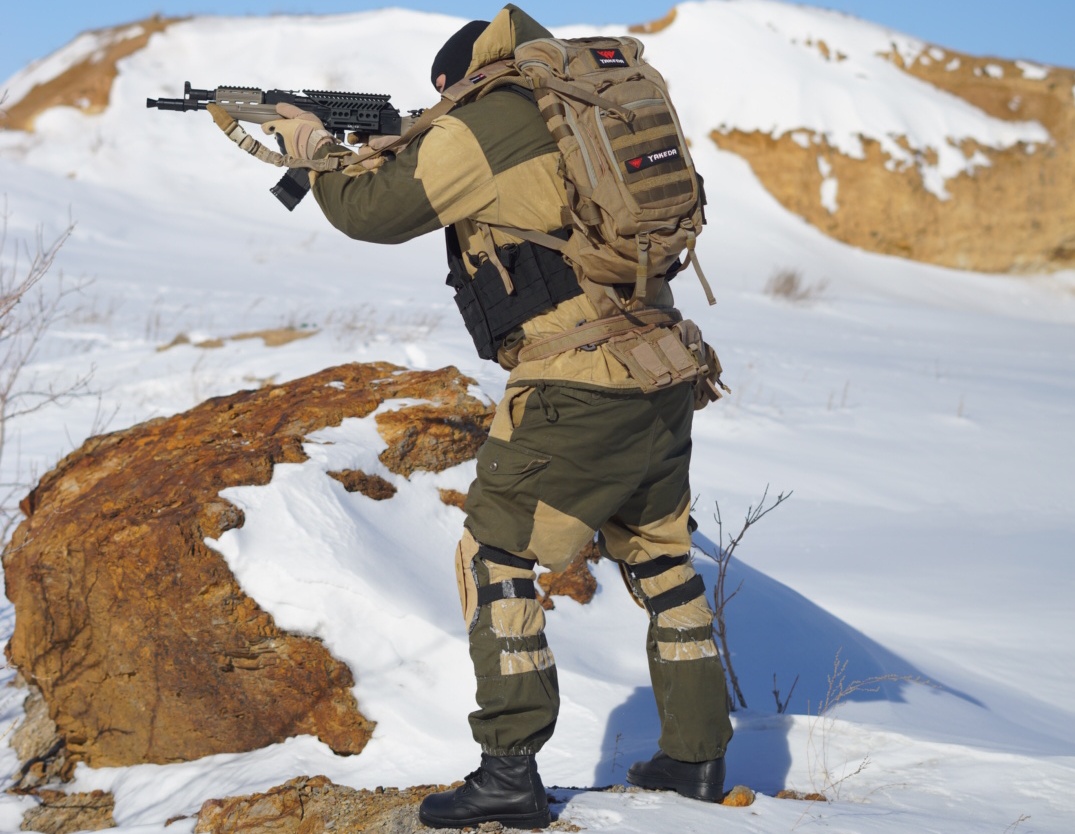 What are the Color Options for Custom Tactical Backpacks?
Jan 20, 2024
What are the Color Options for Custom Tactical Backpacks?
Jan 20, 2024
Why Color Matters for Your Custom Tactical Backpack?
When it comes to selecting tactical backpacks or tactical gear, the color is not just a matter of personal taste; it's an essential factor that can impact both functionality and style. The choice of color in a tactical backpack can influence its visibility, suitability for different environments. For those in military, law enforcement, or outdoor adventure fields, choosing the right color can mean the difference between blending in or standing out in specific surroundings.
In this blog, we delve into the diverse world of color options for custom tactical backpacks. We'll explore everything from standard military hues to more unique, personalized shades. Whether you're looking for a camouflage backpack for field operations or a custom-colored tactical vest for personal use, understanding your color options is crucial. We aim to guide you through the myriad of choices, helping you select a color that not only meets your tactical needs but also aligns with your personal or professional branding.
Expect to learn about the practical implications of different color choices, the availability of various shades, and how companies like Yakeda offer a wide range of color customization options for their tactical products. By the end of this blog, you'll have a clearer understanding of how to choose the right color for your tactical backpack, ensuring it serves your purpose both functionally and aesthetically.
What Are the Standard Color Options for Tactical Backpacks?
When selecting a tactical backpack or gear, the standard color options play a vital role in determining its suitability for various scenarios. The most common colors are black, tan, green, and camouflage patterns, each serving distinct purposes in the world of tactical equipment.
Black is a classic and versatile choice, often favored for its low-profile appearance and universal appeal. This color is particularly popular in urban settings for law enforcement and security personnel, where blending in with a crowd or maintaining a professional look is essential. Black tactical backpacks and tactical vests are not only practical but also carry a certain sleekness, making them a preferred choice for everyday carry and covert operations.
Tan or coyote brown are colors that have gained popularity for their desert and arid environment adaptability. This color is a staple in military gear, especially in regions like the Middle East, where matching the sandy terrain is crucial. For civilians, tan backpacks offer an outdoor, rugged appeal, making them popular among hikers and adventure enthusiasts.
Green, ranging from olive to darker shades, is the go-to color for woodland and jungle environments. This color is ideal for those who require camouflage in forested areas. Green backpacks and vests are common among military personnel and hunters who need to remain inconspicuous in greenery-rich environments.
Camouflage patterns vary widely, from traditional woodland camo to digital or multicam designs. These patterns are designed to blend with various environments, making them ideal for hunters, military personnel, and anyone needing to conceal their presence in specific terrains. The popularity of camouflage extends beyond functionality; it's also a fashion statement in the outdoor and tactical gear market.
Each color and pattern is designed with specific usage scenarios in mind, influencing the tactical backpack's effectiveness in different environments. Whether for professional use or personal preference, understanding the standard color options helps in selecting the right backpack for your tactical or outdoor needs.
How Can Color Affect the Functionality of a Tactical Backpack?
The choice of color in a tactical backpack or gear is far more than an aesthetic decision; it can significantly impact the backpack's functionality in various operational environments. Let's explore how different colors can provide advantages in specific settings, and their effects on factors like heat absorption and visibility.
Colors such as camouflage patterns are specifically designed to blend into certain environments. For instance, a woodland camo backpack is ideal for forested areas, helping the wearer remain inconspicuous during hunting or military operations. Similarly, digital or urban camouflage can be advantageous in cityscapes, especially for law enforcement personnel engaging in covert operations.
Conversely, brighter colors, though less common in tactical gear, have their place. Brightly colored backpacks can be crucial for high-visibility needs, such as search and rescue operations, where being easily spotted can be a lifesaver. Similarly, reflective materials incorporated into backpacks enhance visibility during night operations or in low-light conditions, increasing safety for the user.
The impact of color on heat absorption is another critical factor to consider. Darker colors, especially black, absorb more heat, which can be a disadvantage in hot, sunny environments. This might lead to discomfort for the wearer and potentially affect the temperature-sensitive items carried inside. Lighter colors, like tan or light grey, reflect more sunlight, keeping the backpack and its contents relatively cooler, an essential consideration for desert operations or summer hiking.
Visibility, a key aspect of color choice, plays a dual role. While some operations demand low visibility, others require high visibility for safety. The color of your backpack can either help you blend into your surroundings or ensure you are seen, depending on your mission's needs.
Recommended reading:
Going Beyond Standard: Three Benefits of Customized Tactical Equipment
How Customization Drives Competitive Advantage?
What Unique Color Options Are Available for a Personalized Look?
Beyond the standard color palette, the world of tactical backpacks and gear offers a plethora of unique color options and patterns, catering to those who seek to stand out or express their individual style. These options not only add a personal touch but can also reinforce brand identity for professionals and enthusiasts alike.
Multicolored patterns are a trendy choice for those wanting to combine functionality with a distinct look. These patterns can range from subdued two-tone designs to more vibrant, multi-hued options. For instance, a combination of olive green with patches of orange or red can offer both a tactical advantage and a unique style statement.
Custom graphics and prints are another avenue for personalization. Some manufacturers offer custom printing services, allowing for anything from abstract designs to specific logos to be added to your tactical vest or backpack. This option is particularly popular among organizations that wish to brand their gear with logos or insignia.
For those inclined towards a more understated yet unique look, exploring pastel shades or unconventional colors like navy blue, burgundy, or even purple can be intriguing. While not traditionally associated with durable tactical gear, these colors can make a backpack stand out, especially in urban or non-combat settings.
Reflective materials not only enhance safety but also add a distinctive aesthetic to the backpack. These materials can be used as trim or in patterns, combining functionality with a modern, tech-oriented look.
Hybrid materials, combining fabrics of different textures and colors, also offer unique customization options. For example, a backpack with a combination of matte black canvas and glossy grey synthetic material can provide both durability and a stylish, contemporary appearance.
Glow-in-the-dark accents are a creative way to personalize your backpack, providing a surprising and functional element that enhances visibility in low-light conditions.
Are There Any Color Restrictions for Tactical Backpacks?
While the array of color options for tactical backpacks and vests is vast, there are certain considerations and potential restrictions that may come into play, based on industry standards, operational requirements, or manufacturing limitations.
Firstly, in terms of industry standards and regulations, specific colors or patterns might be mandated for certain professions. For instance, military personnel or law enforcement officers may have to adhere to uniform color codes, which include their outdoor tactical equipment. Camouflage patterns, such as MARPAT (Marine Pattern) or ACU (Army Combat Uniform), are often regulated and used for specific branches of the military. These regulations ensure uniformity and proper function within these professional environments.
When it comes to material limitations, not all fabrics take dye the same way. Some materials used in high-quality tactical gear might have restrictions on the range of colors they can accurately and consistently portray. For example, nylon and polyester, commonly used in tactical backpacks for their durability and lightweight properties, may have different colorfastness levels compared to natural fabrics.
Furthermore, certain manufacturing processes can also influence the color options available. Techniques such as Cordura fabric production or water-resistant coatings may limit the feasibility of producing certain colors or finishes. Manufacturers need to balance the desire for a wide color range with the need for material durability and functionality.
Customization services can sometimes circumvent these restrictions. Companies specializing in tactical gear often offer custom dyeing or printing services, allowing for a broader range of colors and patterns, though this might come with additional cost or production time.
Lastly, it's important to consider the practical implications of color choice. While there might not be formal restrictions on certain colors, using bright or unconventional colors in a tactical environment could compromise the functionality of the gear, affecting stealth or heat absorption, for example.
Recommended reading:
A Brief Introduction to the Origin of Various Camouflage
How Does Yakeda Cater to Diverse Color Preferences in Tactical Backpacks?
Yakeda, a renowned name in the world of tactical gear, stands out for its commitment to meeting the diverse color preferences of its customers, especially when it comes to tactical backpacks and vests. With a deep understanding of the importance of color in tactical and outdoor environments, Yakeda offers an impressive range of color options, ensuring that every customer finds the perfect match for their needs.
Yakeda's range of color options is extensive, encompassing the standard tactical colors like black, tan, and various shades of green, to more specialized and unique hues. This variety caters not only to those in professional fields such as military or law enforcement but also to outdoor enthusiasts, airsoft players, and everyday users seeking both functionality and style.
One of Yakeda's standout offerings is its customization service, enabled through their advanced OEM (Original Equipment Manufacturer) and ODM (Original Design Manufacturer) capabilities. This service allows customers to request specific colors or patterns that may not be readily available in the standard product line. Whether it’s a specific shade to match a unit’s uniform or a unique camouflage pattern, Yakeda’s customization services can accommodate such specialized requests.
Yakeda's prowess in manufacturing also plays a crucial role in its ability to offer such a wide color palette. Utilizing high-quality materials that are receptive to a broad range of dyes and treatments, Yakeda ensures that the colors on their backpacks and vests are vibrant, durable, and resistant to fading. This is especially important for tactical gear, which often endures rigorous use in various environments.
Furthermore, Yakeda's overseas warehouse in California, USA, enhances its capability to provide a wide range of colors and designs quickly and efficiently to its international customer base. This strategic location ensures that customers can access Yakeda’s diverse color options without lengthy wait times.
In summary, Yakeda’s commitment to catering to diverse color preferences in tactical backpacks is evident in its extensive color range and its capability to provide customized solutions through OEM/ODM services. By prioritizing both functionality and aesthetic appeal, Yakeda continues to be a leader in the tactical gear market, meeting the varied needs of its global clientele.
More About Yakeda
Can You Request Color Combinations and Patterns for Your Backpack?
When it comes to customizing tactical backpacks and vests, the ability to request specific color combinations and patterns plays a significant role in achieving both functionality and personal style. Many manufacturers in the tactical gear industry, including Yakeda, understand the importance of this customization and offer various options to cater to these preferences.
The option to mix colors is a popular choice for those looking to create a unique look or to align their gear with specific requirements. For instance, combining subdued colors like olive green with bright accents can enhance the visual appeal of the backpack while maintaining its tactical functionality. This is particularly beneficial for those involved in activities where both visibility and camouflage are important.
Adding custom patterns to your backpack is another way to personalize your gear. Whether it’s a specific type of camouflage pattern to match a particular environment or a custom graphic design that represents a personal or organizational brand, the possibilities are extensive. This customization not only makes the backpack more suited to individual needs but also helps in distinguishing it from standard-issue gear.
The process of requesting specific designs or features typically involves reaching out to the manufacturer’s customer service or customization department. Most manufacturers who offer customization, like Yakeda, will have a process in place to discuss your requirements, offer suggestions, and provide a mock-up of the design for approval. This process ensures that the final product aligns with your expectations in terms of both aesthetics and functionality.
In terms of materials and manufacturing techniques, advancements in textile technology and printing have made it easier than ever to create a wide range of colors and patterns on tactical gear. These innovations ensure that the colors are long-lasting and resistant to the wear and tear typical of tactical environments.
Conclusion: Choosing the Right Color for Your Tactical Needs
In conclusion, the journey to select the right color for your tactical backpack or vest is a balance of functionality, personal style, and operational requirements. Throughout this blog, we've explored the various aspects that make color an essential consideration in your tactical gear choice.
We've discussed the standard color options like black, tan, and green, highlighting their popularity and specific use cases in different environments. The unique color choices and patterns available for a personalized look showcase the vast array of options beyond traditional hues, offering a chance for personal expression and brand identity in your tactical gear.
Understanding the functional implications of color, from camouflage effectiveness in various environments to the impact of color on heat absorption and visibility, is crucial. We've also delved into the potential color restrictions due to industry standards or manufacturing processes, illustrating the importance of considering these factors in your selection.
The ability to request custom color combinations and patterns further amplifies the scope of personalization, allowing for gear that is not only practical but also aligns with individual style or team branding.
In choosing the color of your tactical backpack or gear, remember to weigh the importance of the environment in which it will be used, the operational needs, and your personal or organizational style. The right color choice can enhance the functionality, safety, and overall appeal of your tactical gear.
Whether for professional use in law enforcement and military operations or personal use in outdoor adventures and everyday carry, the color of your tactical backpack is a reflection of both your mission and your identity.
FAQs: Common Questions About Customizing Tactical Backpack Colors
Q1: Are there any colors that are better for concealment in nature?
A1: Yes, colors like olive green, tan, and various camouflage patterns are ideal for blending into natural environments. The choice of color should match the specific terrain – green shades for forests, tan for deserts, and snow camo for winter environments.
Q2: How does color choice impact the visibility of a tactical backpack?
A2: Darker colors like black and navy are less visible at night, making them suitable for covert operations. Bright colors or those with reflective materials are more visible and are preferred for safety in search and rescue operations.
Q3: Can I get a custom pattern, like a digital camo, on my backpack?
A3: Many manufacturers offer custom patterns, including digital camo. This service might be available through OEM/ODM services, where specific designs can be requested and printed on your backpack.
Q4: Are there additional costs for custom color or pattern requests?
A4: Customization can sometimes incur additional costs, depending on the complexity of the design and the manufacturing process involved. It's best to consult with the manufacturer for specific pricing details.
Q5: How long does it take to receive a custom-colored tactical backpack?
A5: The lead time for custom orders varies depending on the manufacturer and the specifics of the order. It’s advisable to discuss the timeline with the manufacturer at the time of placing the order.
Q6: Can I request a color combination that isn't typically used in tactical gear?
A6: Yes, most manufacturers are open to experimenting with non-traditional color combinations to cater to unique customer preferences. However, it's important to consider how the color choice might impact the backpack's functionality.
Browse The Products
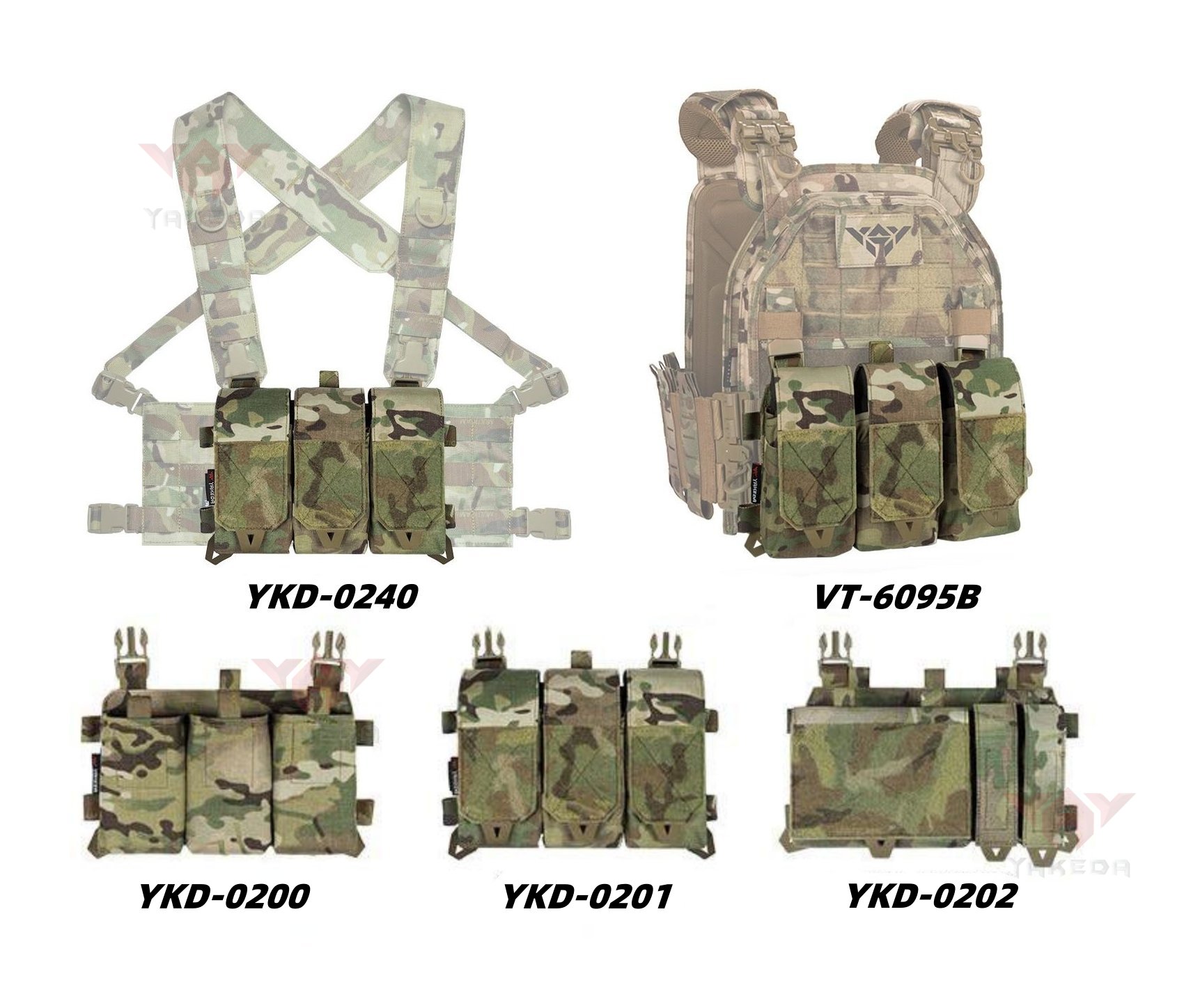 How Plate Carrier Placards Enhance Tactical Gear Customization
Jul 31, 2024
How Plate Carrier Placards Enhance Tactical Gear Customization
Jul 31, 2024
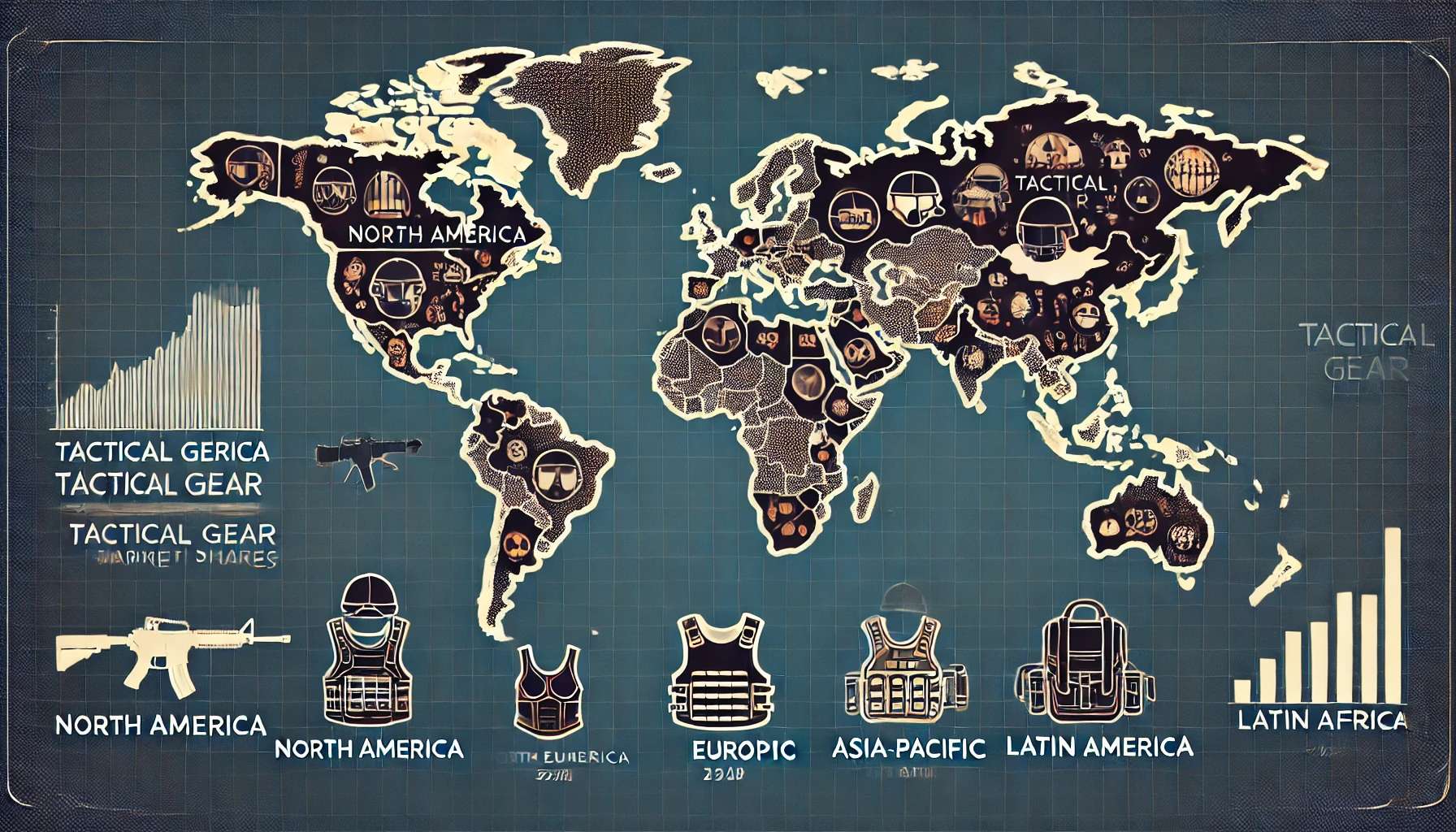 Global Market Trends in Tactical Gear for 2024
Jul 11, 2024
Global Market Trends in Tactical Gear for 2024
Jul 11, 2024
 What are the Color Options for Custom Tactical Backpacks?
Jan 20, 2024
What are the Color Options for Custom Tactical Backpacks?
Jan 20, 2024
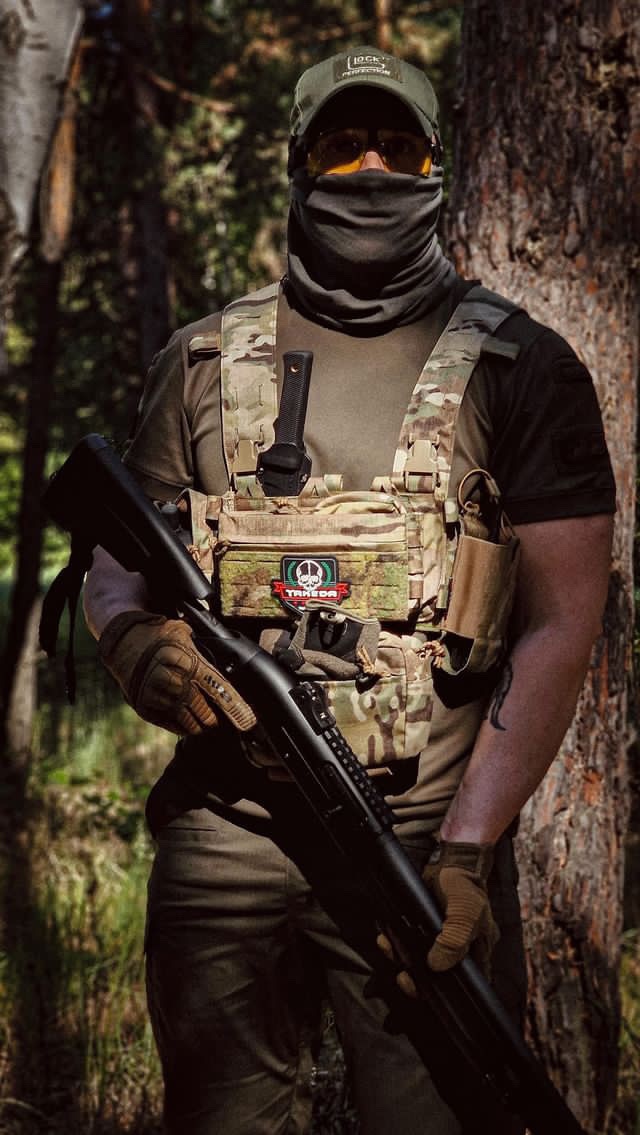 What's Special About Tactical Custom Chest Rigs?
Jan 19, 2024
What's Special About Tactical Custom Chest Rigs?
Jan 19, 2024
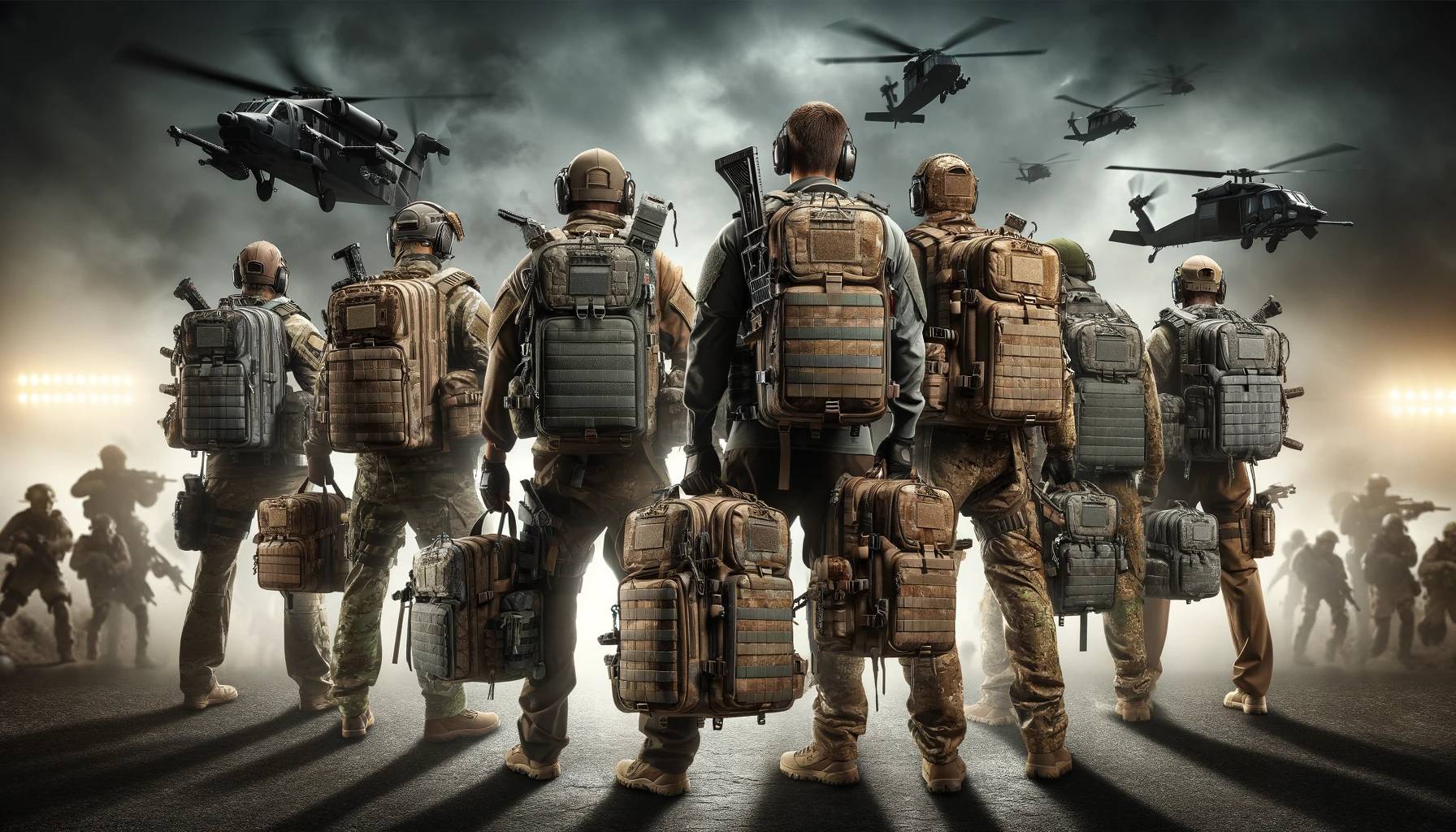 What are the Security Features in Custom Tactical Backpacks?
Jan 18, 2024
What are the Security Features in Custom Tactical Backpacks?
Jan 18, 2024
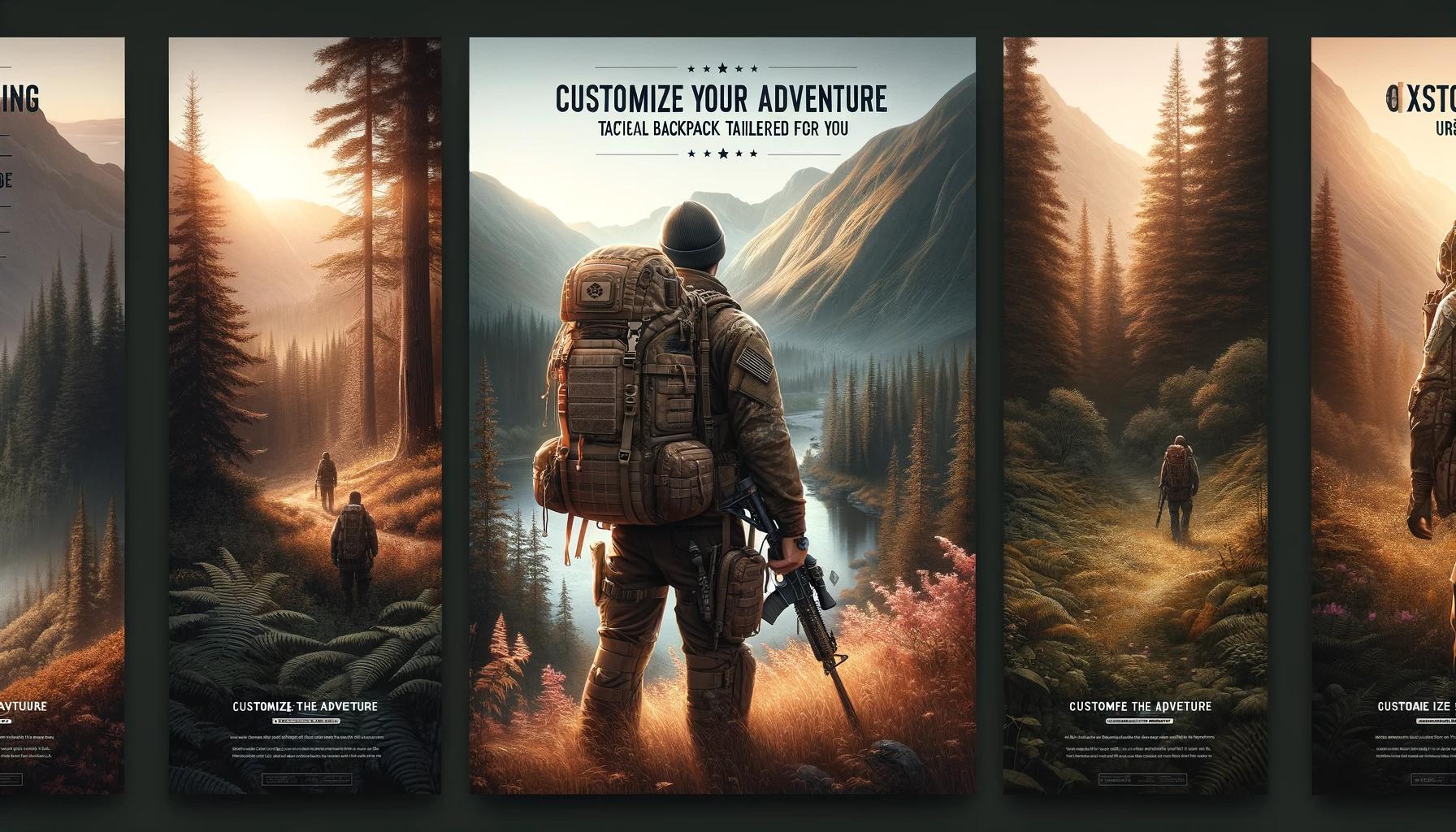 How custom tactical backpacks highlight your tactical brand?
Jan 17, 2024
How custom tactical backpacks highlight your tactical brand?
Jan 17, 2024